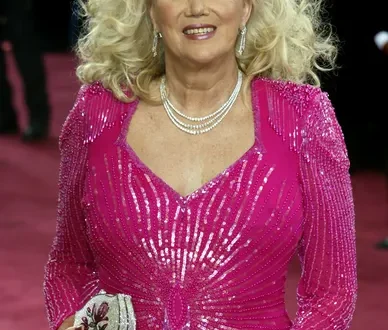She Rides Shotgun is a gripping, emotionally charged crime thriller that turns a well-worn genre template into something fresh and resonant. Anchored by an uncompromising performance from Taron Egerton and a breakout turn from young actor Ana Sophia Heger, the film combines high-stakes action with an intimate exploration of fractured family bonds. It’s tense, raw, and occasionally brutal, yet imbued with enough humanity to linger long after the credits roll.
Egerton plays Nate, a recently released ex-con whose life outside prison walls is anything but free. Carrying a past riddled with bad choices and dangerous associations, Nate wastes no time in seeking out Polly, the 11-year-old daughter he’s barely seen since infancy. She lives with her aunt, who views Nate with open suspicion, and their first meeting is tense and awkward—two strangers linked by blood but divided by years of absence. That gulf is widened by the fact that Nate’s sudden reappearance has nothing to do with a gentle reunion. A violent gang he crossed in prison, along with corrupt law enforcement figures, have marked him for death, and Polly’s safety is now inextricably tied to his own survival.
The pair is forced onto the road in a desperate bid to stay ahead of their pursuers. What follows is part chase film, part coming-of-age story, and part examination of what redemption might look like for someone whose life has been defined by violence. Thematically, it shares DNA with films like Logan and The Road, yet it distinguishes itself by the specificity of its details and the authenticity of its father-daughter dynamic.
Egerton delivers a performance far removed from the polished charisma he’s shown in previous roles. His Nate is wary, unpredictable, and worn down to the bone. The physical transformation is striking—tattoos crawl up his arms and neck, his eyes carry the dull alertness of a man who’s learned to anticipate danger, and his movements are taut and economical, like someone used to living with one eye over his shoulder. He conveys both menace and vulnerability, letting moments of fatherly instinct slip through his hardened exterior.
Heger’s Polly is equally compelling, and her performance is the emotional heartbeat of the film. She’s guarded, suspicious, and understandably resistant to the idea of trusting a father she’s only known by reputation. Yet as the story unfolds, she reveals a quiet resilience. She doesn’t adopt the false bravado that so often mars child performances in action-heavy films. Instead, she reacts as a real child would—afraid, confused, but capable of adapting when she has no choice. The relationship between Nate and Polly evolves in subtle, believable increments: an awkward conversation over junk food, a shared laugh in the middle of a tense hideout, an unspoken moment of trust when danger is near.
Director Michael Matthews crafts the film with an eye for both urgency and intimacy. The cinematography alternates between sun-bleached, wide-open landscapes that emphasize the isolation of their journey and claustrophobic interiors where danger feels inescapable. Action scenes are quick, sharp bursts of violence rather than extended set pieces, heightening their impact. A motel bathroom shootout is staged with disorienting precision, the camera hemmed in as tightly as the characters themselves, making every movement feel perilous.
The pacing strikes a satisfying balance between relentless forward motion and quieter character beats. This is not a film interested in wall-to-wall spectacle. It gives its leads space to breathe, to look at each other, to weigh whether they can truly rely on one another. That breathing room allows the story’s emotional through-line to develop organically, making the bursts of action all the more jarring.
Supporting characters are well-drawn, even in limited screen time. A morally compromised detective adds a layer of ambiguity to the law enforcement pursuit, blurring the lines between good and bad. The gang members on Nate’s trail are convincingly dangerous without tipping into caricature, and their presence is felt even in scenes where they’re offscreen.
If the film falters, it’s in its adherence to certain genre beats. The on-the-run structure—complete with car chases, hideouts, and inevitable betrayals—will be familiar to anyone who’s seen similar thrillers. Yet She Rides Shotgun rises above predictability through its commitment to character and tone. Where many films in this mold lean on sentimentality or exaggerated heroics, this one remains grounded in the reality of its characters’ situation. Survival comes not from outsmarting every enemy or pulling off elaborate schemes, but from small, desperate choices made in the moment.
By the time the final act arrives, the transformation in both Nate and Polly feels earned. The guarded mistrust of their early scenes has shifted into something deeper—not necessarily reconciliation, but recognition. They’ve seen each other in their most desperate moments and found common ground in the shared will to keep moving forward.
She Rides Shotgun may draw comparisons to its genre peers, but it distinguishes itself through the raw honesty of its performances and the stripped-down, tactile quality of its filmmaking. It’s a reminder that even in stories built on violence and flight, the moments that resonate most are often the quiet ones—two people, bound by blood and circumstance, finding a way to ride forward together.
>




